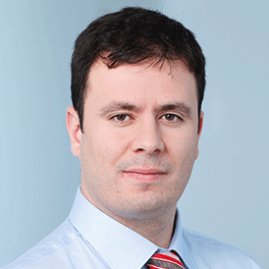
Savas Tay is a systems biologist and bioengineer who works at the interface of biology, physics, and engineering. His overarching goal is to understand how biological systems work from an engineer’s perspective, and use this knowledge to manipulate cells and gene pathways to help cure diseases. On the technology front, his lab develops high-throughput and high-content single-cell analysis devices by integrating microfluidics and optics.
Prof. Tay is joining University of Chicago as an Associate Professor in the summer of 2016 from ETH Zurich in Switzerland. A main focus for Savas Tay in Chicago will be to understand the role of molecular pathway dynamics in cellular information processing, pathogen sensing and recognition, and signaling. His Lab performs precision dynamic measurements on living cells and develops predictive models of complex biological systems like the immune system. Such models can serve as a rapid test-bed for drug studies and genome editing applications.
Microfluidic technologies developed by the Tay Lab create realistic environments that mimic living tissue, and measure dynamic processes in individual cells with extreme precision and throughput, adding majorly to the systems biology push at the Tay Lab. Tay is also interested in translating such technologies to real-life biomedical applications.
His work on NF-κB, a key transcription factor that regulates thousands of immune genes, was published in leading scientific journals such as Nature, Cell and PNAS. He discovered that cells activate NF-κB in an all-or-none fashion, similar to a digital switch. Recently, he discovered that molecular noise improves cellular signal transmission, and showed how oscillatory inputs control transcriptional dynamics by synergizing with molecular noise.
Before becoming interested in biological research, Dr. Tay was an optical physicist. His achievements in optics include the development of the first updateable holographic 3-D display, infrared-sensitive holographic materials for optical communications and bioimaging, tunable photonic crystal devices, and plasmonic thermal emitters for infrared imaging.
